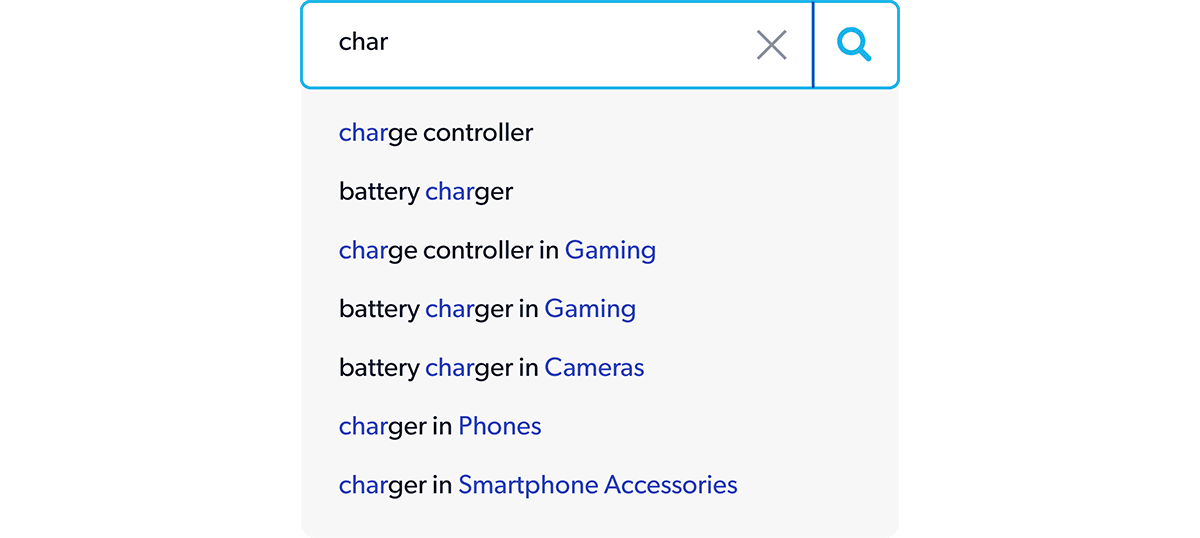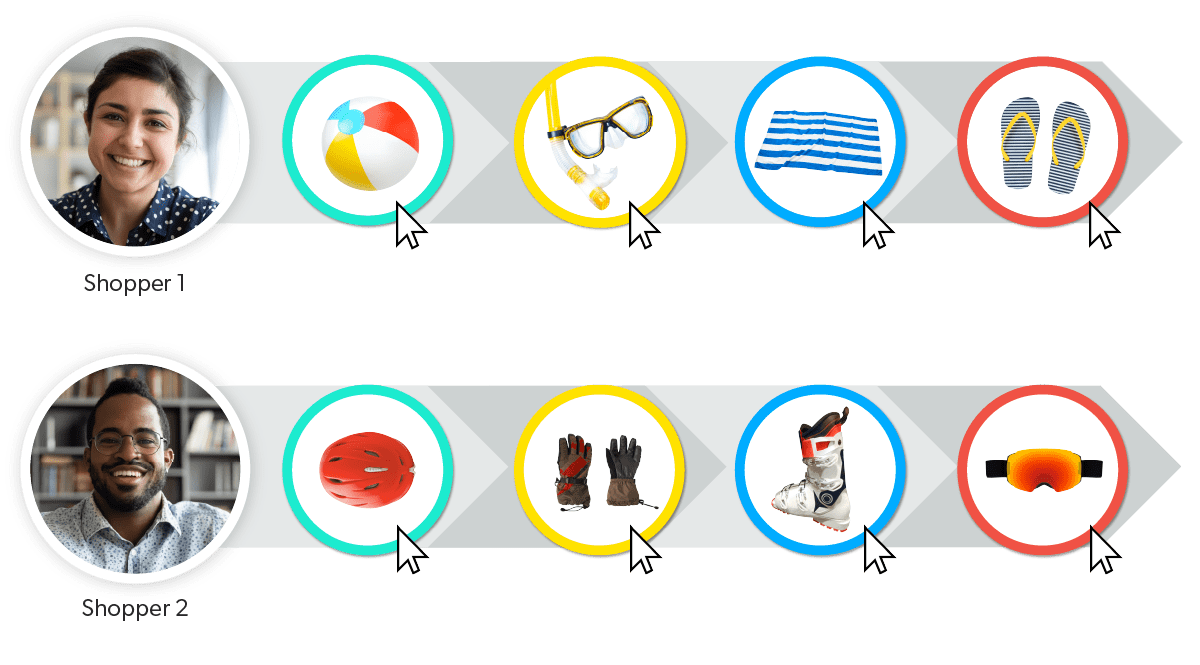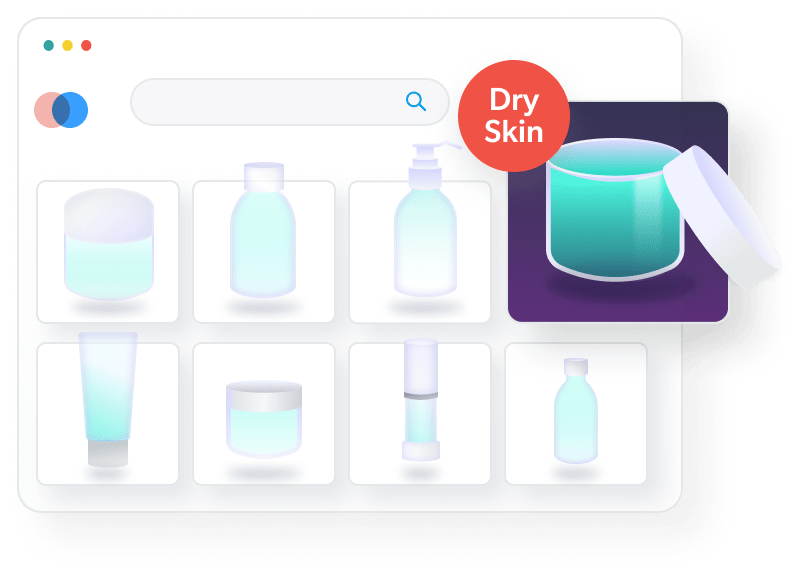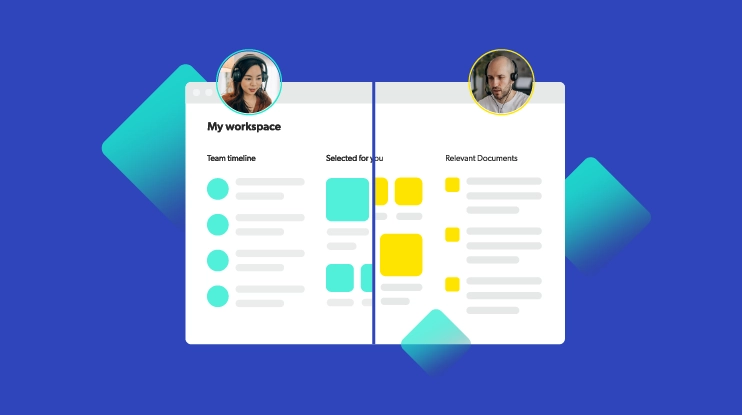One to one digital personalization is a big deal—and getting bigger. Thanks to digital giants such as Amazon and Netflix, consumers are getting used to online experiences that make it easy to zero in on exactly what they need. In fact, a survey by Coveo found that 43% of consumers would pay more if they could find what they’re looking for in just a few clicks.
And while that number seems poised to grow, the reality for many mid-size retailers is that personalization has been daunting. According to McKinsey & Company, AI-powered personalization “will be the prime driver of marketing success” by 2024. Even as that date grows close, though, too many organizations lack an effective personalized marketing strategy.
“There’s really a huge gap between what a gigantic tech company can do and everybody else can do,” Ciro Greco, Coveo’s vice president of artificial intelligence, said during a recent episode of Coveo’s podcast, “The Ecom Edge”.
Big companies have tons of behavioral data—yours and others from which they can model. Mid-market companies? Not so much. So is one to one digital personalization out of reach for brands that don’t have access to the big, big data that the Amazons of the world do? It doesn’t have to be. Check out the podcast for insights, or else let’s look at closing the gap and make personalization more accessible.
‘A Machine Should Think Like a Human’
Before we get into specific tactics, it’s helpful to consider what an AI-powered personalized experience really means in the big-picture sense. As Greco put it, “a machine should think like a human as much as possible—not the other way around.”
In other words, when you are on a brand’s website, you shouldn’t have to think, “Hmm, how should I phrase this search so that the website will show me the kind of products I need?” Instead, using the website’s search should feel more like talking with a clerk in a brick-and-mortar store. Even if you don’t know exactly what you’re looking for when you arrive, a website — like that savvy human clerk — should be able to figure out your unique needs and lead you to the right products.

Greco thinks of personalization efforts as a ladder. “You start with things that are reasonably easy, and then you become more and more sophisticated,” he said.
However, when we think of website personalization, we tend to picture just the top step of the ladder: history-based personalization. For example, a brand provides a customized homepage experience based on what a shopper has bought or even browsed through on the site during previous visits. This is an area where titans like Amazon, which have frequent return visits by logged-in customers, excel.
But history-based personalization isn’t the end of the story. The majority of visitors to most sites don’t have any previous history shopping there. The challenge then becomes warming up the “cold start” with the data that brands do have.
Personalizing Customer Service Based on Location
Brands can start thawing the cold start as soon as customers arrive on their website. One of the easier ways to do this is through environmental hints, Greco said. By using a shopper’s IP address, the website can tell where they are located and make inferences about what the shopper might be interested in.

For example, if it’s early January, a sporting goods retailer could use its homepage to display beach gear to customers in Australia. For customers in Canada, though, the site would instead display snowboarding or skiing equipment. Think of this as the online equivalent of a retail chain having varied displays in their brick-and-mortar stores depending on where they are located.
Asking Instead of Demanding Customer Data
Moving another step up the ladder, retailers can come right out and ask customers to share information that will help them provide one to one personalization.
For example, after a customer searches for “dining table,” a furniture retailer’s site could refine results by asking the shopper to check boxes indicating how many people they need the table to seat and what their décor style is.
Or a beauty retailer could allow customers to narrow their search for skincare products by selecting their areas of concern (dry skin, blemishes, etc.).

But there’s an art to doing this, Greco said. Customers need to understand why providing you this information will benefit them. “Do they feel that there’s value in sharing this information with you?” he said. And they have to trust you not to misuse the information. So you have to be upfront about why you’re asking for their customer data and how you will use it.
You also have to pay attention to how you’re asking, Greco said. Hitting site visitors immediately with a giant pop-up that asks them questions could have the opposite effect and drive a potential customer away from your site.
Building a Customer Journey Map with AI and Machine Learning
Moving farther up the ladder still, we come to the power of AI and machine learning to create one to one hyper personalization. If you’re worried that these high-tech solutions work only for Amazon-size brands, think again.
“A medium-sized ecommerce website still generates a reasonable amount of data points,” Greco said, even if the brand doesn’t have Amazon levels of customer journey data. “There’s something to chew on.”
He said his clients are usually already tracking customer engagement like “where they click on, the pages that they view, the products that they view, (and) of course the products that they add to cart, remove from cart, and ultimately buy.” When you combine that information with catalog data, powerful one to one personalization can occur.

With each customer visit, a website can better recognize similarities and patterns. It begins to understand things like sneakers are closer to boots than they are to shirts, Greco said. And it uses this understanding to better anticipate a customer’s needs, even if they’ve never visited the site before, providing more personalized product recommendations, better content personalization, and overall improved relevance to an individual customer.
“When I see a new user coming on the website, and then I wait for the user to do something — to click on something, to search for something, to just take some actions — then my job is to map those actions as fast as possible to the map that I created using the data of other users,” he said.
Greco continued, “During your engagement with the website, what we’re going to do is try to put you on a map that I already built using the behavior of other people. … If you don’t have a map, it’s really hard to understand what a person is doing. … (but) the more accurate your map is, the better you are at predicting and inferring the intent of the user.”
A very simplified example: If 100 people first look at Item A on your website, but then ultimately buy Item B, the site learns to recommend Item B to new visitors who search for Item A.
Reaching the Top of the Marketing Personalization Ladder
All of these personalization tactics don’t just drive individual sales. They also contribute to the overall user experience on your website. And, as Greco pointed out, a consistently strong customer experience encourages a repeat visitor to your site to take that next step and become a logged-in user. “And the moment they log in, now a new world opens up” in terms of personalized marketing. The top of the ladder is now in sight.
To learn more about one to one digital personalization, check out the episode “1:1 Digital Personalization: Fact or Fiction” from Coveo’s podcast, “The Ecom Edge.”
Dig Deeper
Ecommerce marketers are spending nearly 15% of their budget on personalization—yet almost two-thirds report less-than-stellar results. Find out how to change that in our Ultimate Guide to Personalization in Ecommerce.
Trying to sell the benefits of AI-powered personalization up the chain of command? Check out our Building a Business Case for AI post to get ideas on how to persuade the c-suite.


